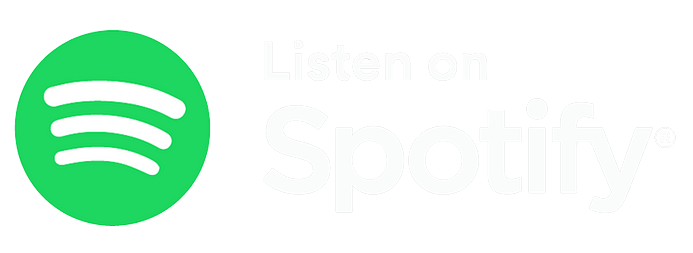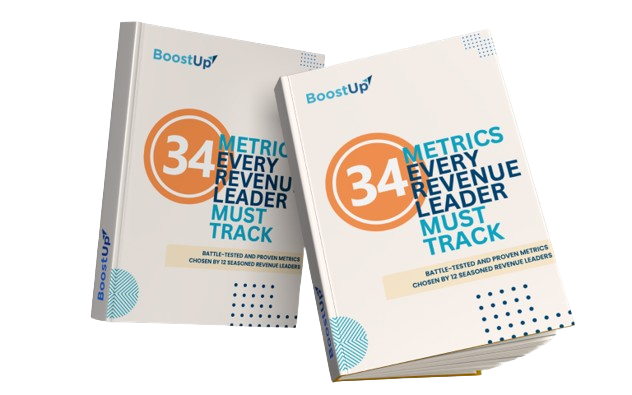He is a revenue operations leader and for well over decade, he uh, spend a lot of time in a number of different roles in revenue operations, as well as a direct sales roles. So he carried a bag. He knows what it means to be on the front lines. The experience on both sides of the revenue engine has enabled him to learn to build strategies and solutions that support very well those that are on the front lines.
Most recently, Greg has spent a significant amount of his time focusing on building pipe from existing product usage. So we're excited to add Greg to our Revenue Maverick program.
And, um, Greg, in today's program, we would love to hear from you on how you're thinking about and specifically in this, uh, product lead growth, uh, uh, space and how we can leverage that, uh, around the three metrics that you want to share with us today. So, Without any further ado, I'm gonna turn the time over to you and, uh, the floor is yours.
Greg Rattray: so my goal today is to give everybody an idea of what it's like to work in revenue operations for a product led growth org and potentially even if a product led growth motion is good for your organization. So before we jump into that, let's define what product led growth is. It's when your main customer acquisition channel is through your product.
So you can see companies like Slack, zoom, Calendly, DocuSign, these are all companies using product led growth. And it's really been booming in popularity in the past five years. So you can see the market cap in 2017 was about 41 billion, and now it's over 500 billion. So it's that 12 x growth. Um, and it's growing because we have shorter sales cycles, um, lower customer acquisition costs, and there's also, you know, a feeling that buyers like to actually try the product first before going into the sales cycle.
Um, so those are some of the trends that we're seeing, and you might ask them, what's the difference in the sales funnel between sales led growth and product led growth? You can see on the screen here, We've got our standard acquisition channel for sales led growth, which I think most people are comfortable with. With product led growth, it's a little bit of a circle, it's a flywheel where the product experience is actually in the middle, um, of that cycle. So I think it'd be helpful for me to give you an example, um, of what this looks like so everybody is familiar. Um, the other day I signed up for a lead tool and I signed up because I was in that awareness phase.
I had friends that used it, I'd used it at a previous company. So we started out awareness, went to sign up, and now I'm actually using the tool enough that sales is messaging me, trying to get a meeting. And that means I'm doing certain product actions. Um, at a certain point, I might convert to an opportunity.
If I convert to, um, a closed won deal, maybe I tell other departments within my org. And then they become aware and that signup process happens over and over. So that's kind of the high level. Um, next I want to talk about Rev ops at a product led growth org. Um, unless you have any questions there, Matt,
Matt Durazzani: Yeah, I do actually.
So perhaps for some people that may have not heard product led growth, is it fair to say that you're talking about companies that maybe are using it, calling in maybe free-mium products or, uh, these opportunities where they can simply sign up for free or sign up of course, at a certain entry level price and either models work, but essentially is really learning and by usage, by a achieving certain milestones in the adoption of the product, it you are qualifying as a potential lead for the sales cycle in that organization. Is that what you meant?
Greg Rattray: Well said. You got it.
Matt Durazzani: Okay, perfect.
Greg Rattray: So Rev ops in a product led growth org is actually very similar to a, a sales led org.
two of your main tenants are gonna be alignment and efficiency, right? But the biggest difference is that since these leads are coming from the product, you're gonna have different levers to pull when you are aligning groups and when you're optimizing for efficiency. Right. So in the chart, you see rev ops is really that connective tissue between the product org and the go-to-market orgs, which we'll get into in a bit.
Um, and then, you know, if you're thinking about going into a product-led growth org, from a rev ops standpoint, it's really important that you're strong with analytics and systems, right? You have a lot more data. And you also have more systems, so there's more room to optimize processes and automate as well.
Matt Durazzani: You know, this is really a good call out, Greg, so thanks for bringing this up. So, um, couple really good takeaways. Uh, key differentiation here is that the product team is really, is now really, really entrenched into the, the sales cycle. Mm-hmm. More so than traditional models. Yeah. There's more data of course, because now you're looking at usage, and that can be pretty extensive depending on the product. Um, and one question for you is what type of roles or, teams is a rev ops person in this type of, um, companies really working with on a day-to-day basis?
Greg Rattray: Yeah. I mean, you're working with most closely with the sales and the customer success team, right.
And really understanding that full funnel. You bring those learnings to the product team because the product team is essentially your marketing engine and your lead funnel. So we pass that feedback over to the product team so we can optimize the product and tweak that funnel.
Matt Durazzani: How much is actually the marketing department, the user of course, is very involved in building this pipe.
Um, how is marketing really, um, supporting this type of motion?
Greg Rattray: I think a lot of organizations are still trying to figure that out, right? This has become so popular in the last five years, right? The way that I think about it is that marketing wants to drive that, um, awareness to the product and help drive those initial signups.
And then the product's job is to go ahead and get those to convert into sales leads, but there's also room for marketing to help with that conversion, um, as well.
Matt Durazzani: Yeah. Makes sense. Thank you. Should we go to the first metric?
Greg Rattray:All right. So our first metric is gonna be lead to opportunity conversion rate. So basically what is the conversion rate for product qualified leads that result in a creation of an opportunity? So we're very familiar with this from a sales led model with the MQL to opportunity conversion. Um, before we jump into the chart, I just want to define product led or product qualified leads, and talk a little bit about that process and then we can get into the chart.
So, with product qualified lead, we like to look at the actions that that person is taking in the product, and then also look at the persona, right, and essentially give that a lead score. And the way that I like to run it is put the lead score into three different buckets.
One, just ignore this person. Two, we're gonna target this person. And three, this is a very hot lead. And from there we pass those over to the sales team. And we also give a little bit of information about, hey, what, what kind of messaging do you target this specific person with based on their actions and their persona.
And from there we go ahead and measure the conversion rate. So that's the standard conversion rate. What we're looking at here is more of like a deep dive, right? This is us trying to really understand, hey, work with the product, what is helping people convert and what isn't? You know,
Matt Durazzani: I love this one because um, the first thing that comes to my mind based on what you said is that now revenue operations needs to be very strategic on, uh, determining the type of message that the sales team needs to pitch. Right? Uh, so is it revenue operations role to, to write up those messages? Is it coming from product? Is it someone else?
Some other roles in the company that provides those pitches? What, what is your experience?
Greg Rattray: Certainly a part of it is marketing. Certainly a part of it is sales leadership. Um, certainly part of it is enablement. I don't know if there's a best, a best practice, but what you do wanna make sure is that your company messaging resonates across the board, and that high level is like a marketing, um, you know, function.
Matt Durazzani: Okay, that makes sense. Um, any, anything that, uh, normally at this stage, For this type of metric, um, you need to be looking very closely or something that, um, uh, sometimes is not very easy to understand. Any other challenges that you would, uh, advise someone when they build this type of metric?
Greg Rattray: Um, I mean, we have to remember that it's a secondary metric, but in terms of the product, um, kind of with these PQL's, the actions that someone is taking within the product, is typically a really, really good indicator of conversion, right?
So if somebody sends a sequence with this contact tool that I was talking about, they're almost a 50% likelihood to convert. That is huge, right? So some questions that I would want to know, and some things that I want to dive into is, hey, how do we get people to send sequences, right? How can we make this easier for people within the product?
And that's where we'd be working with the product team and providing that sort of data. Um, and then, you know, on the other side, like, hey, this training isn't really converting people. Um, we're seeing a low conversion rate. Is it the wrong training? Should we remove it for something else? Again, it's that feedback loop to make sure that product, um, is understanding what is converting what isn't.
Matt Durazzani: Makes sense. Perfect. I love it. I love it. Thank you.
Greg Rattray: Just one more thing here, right? Like, this is just a snapshot. I wanna understand the product actions and also look at win rate, average deal size, um, and also expected value, right? Which I, which I look at as like the full conversion rate in the average deal size.
And from there, We can actually come up with a lead score and tweak our lead scoring. So this is an indication of a strong lead, but we wanna look at it through the full funnel as well.
Matt Durazzani: Awesome. Completely agree with that. Thank you so much. Should we go to the next one?
Greg Rattray: Okay. Customer acquisition payback period. So this is a really important metric for all SaaS companies. Um, but you know, especially important for product led growth companies, a lot of people are moving to product led growth for those lower customer acquisition costs. So we have to be aware of, Hey, is this helping us?
Is this hurting us where our trends? Um, so if your customer acquisition payback period is low, that's a good thing. Right. That means you're able to pay back, um, that customer cost in maybe 12 months or less. If it's high, maybe over 18 or 24 months. That's where we're really gonna want to dive in and understand, hey, is this the right messaging?
Are we going after too many customers? Does this strategy work with this customer base?
Matt Durazzani: Makes sense. So I noticed that here in this specific example, um, you know, the enterprise business tend to, uh, deflate over time. Right? Which is a good thing. Uh, but I also seen that, for instance, the mid-market, the one that tends to go up and down.
Um, do you have any, uh, examples where, you know, marketing particularly was hurt more than the others or was causing, uh, more challenges in understanding how to sell, uh, that it, of course was different from the other industries that you were selling into.
Greg Rattray: Yeah. Um, you know, you have to figure out how your business fits, right?
Um, in the past we've seen some higher payback periods for small business, and when we really dug in and got deeper, we realized it's because we are servicing all of those customers, even though it's free, right? So we're giving them our customer support, our time and our resources, but they're not converting at a high enough rate for us to actually be able to make it a sustainable business model.
So in that, in that case, it was really dangerous for us and we had to actually switch up our strategy with small business.
Matt Durazzani: I think it's an excellent example. I think there's a lot of companies, especially early on that experience, this type of situations where, uh, because they haven't really figured out how to sell in every market, uh, they do waste a lot of time and resources, um, on free customers, and they either end up making sure that the product doesn't offer support for those to force to make you to buy. But I think to your point on the previous two slides is really by looking at these analytics and understanding how people are using it, um, you wanna pull that customer service support in a sense, away only after the product can be self-sustainable at the low entry level of a free product in a sense, right. So that you don't tend to lose customers because the product doesn't satisfy anymore. Right. So I think it's a great example and I think this is an important metric to look at it to make sure you are feeding product the right type of insight.
Greg Rattray: Exactly.
Matt Durazzani: Okay. Anything else you wanna say about this, uh, specific metric?
Greg Rattray: You know, I think, uh, one of the things is like, What are the underlying metrics we would look here and I'd wanna look at win rate, um, but also win rate by competitor. Um, it's possible that in a certain segment you're just really getting beat by another competitor, and in that case, maybe it's not the wrong go-to-market motion, but then you have to actually have better training and maybe you have to have some product improvements as well.
Matt Durazzani: That's a good point. That's a good point. Okay. Well, let's dive into our, our third metric here.
Greg Rattray: Let's do it. All right. I like this one because it's super important for people that, for teams that are having issues with customer acquisition costs, the best thing that you can do if you're having trouble with customer acquisition costs is to go after upsells and expansion opportunities.
Um, so. Hang in with me while I explain this metric. It'll make a ton of sense. So, expansion, opportunity identification. What this means is that for each new customer that we move to closed won, it's the average number of expansion opportunities and expansion ARR identified at close. So what this is doing is it's looking at the top of the funnel for expansion opportunities for both number and for ARR.
And the reason that this is important is because the way that I've set up ROEs in the past is that these are the opportunities that sales actually gets credit for. So they want to work their hardest to identify all of these opportunities because they're gonna go ahead and work them. Does that make sense?
Matt Durazzani: Yeah, it does. And it sounds like it's very tied to comp plans at this point.
Greg Rattray: Big time. Yeah. No, it's, it's definitely tied to comp plans. But it also gives us some other insights into how our business is operating, right? like you can see right now that green means we're averaging about half of an expansion opportunity per closed one, which, you know, in this business is pretty healthy if that starts to go up.
If we start to see one or two expansion opportunities per close won deal, that might not be a good thing. That might mean that we're actually not bringing enough and closing enough in the initial deal. So at that point, that's where we would want to dive in and look at our execution and say, Hey, how can we have made this into one deal?
Right? But if it's going the other way, Then we need, maybe need to train our teams. If we're not seeing any expansion opportunities identified, then we need to ex uh, explain to our teams how do you identify those? How can we get more resources to help the sales team move to different departments and move to different geos through, um, you know, their initial champions.
Matt Durazzani: I think that's a very, very good point you just brought up. Um, I love the fact that you're using this metric to identify whether or not we're leaving too much money on the table, right?
Greg Rattray: Yeah, exactly.
Matt Durazzani: And of course there's businesses where there's a different strategy where you may have first, uh, land and then expand. So we sell a small deal and then we, but of course that is at the individual level of the business, right? To understand what is the right strategy. But I think this is a very good indicator to tell you whether or not. Um, you either saturate what you can get out of an account and therefore maybe there's no more expansion or, uh, the other way around, you know, we really went too small, we should have gone bigger because, you know, here we triple in a matter of few months after the first signup. Right. So I think it's a very good point you brought up.
Greg Rattray: Yeah, I like most of the expansion, um, metrics actually look at the deals once they're closed or forecasted, but this gives us the very top of funnel.
And it gives us a really good insight into, hey, which reps are good at this and which reps aren't. Um, so it's a really good training tool.
Matt Durazzani: What else, uh, do you think, um, um, or what are the type of observations have you seen within a revenue ops strategy mindset by leveraging a metric like this?
Greg Rattray: Yeah. I mean, it's just, this is what I would call an efficiency metric.
Right. Um, where you're looking at conversion, what percent of something, um, so efficiency metrics are great because that helps you actually model out your business and you say, okay, if we get this many closed wons, we'll be able to get this many expansions, rather than counting metrics, which are, Hey, we are, we got 30 of these last quarter, how many can we get next quarter?
So it's actually a, you know, a better way to, um, you know, build a pipeline model is with these efficiency metrics.
Matt Durazzani: Good point. Good point. Okay. Anything else that you wanna mention with regards to this one before we wrap things up?
Greg Rattray: No, I, I don't
think so. I think, I think we're good on this one.
Matt Durazzani: Okay. So one, one thought I had based on your current experience is that at a certain point in your career you switched from, uh, you know, some of these operational roles.
You went to the front lines and uh, uh, you carry the bag, you carry your own quota. You were an account executive. Um, would you mind expanding to maybe those people that never tried that. And what are the benefits of maybe experiencing the frontline? Um, what are maybe the paths that are worth passing on to as an advice to other people?
Greg Rattray: Yeah, so just to clarify, I started, I kind of had background in finance and then I went into sales. And from sales I found revenue operations. Um, you know, having that sales background. It immediately builds trust with people in the sales department. I think that's the biggest thing is because you really understand the ins and the outs and you understand what they need.
Um, so when you are coming in and maybe you don't have that experience, it's all about building trust, right? You need to talk to people, you need to understand what they're looking for. Um, and it's going to take a little bit longer when you haven't done their job. So it's just, it gives you a little bit of a, of a foot forward in the, um, like the relationship trust building process, I'd say.
Matt Durazzani: Would you recommend people if they have the opportunity to try that path? Or, and is it not necessary for, for revenue operations? What is your perspective?
Greg Rattray: Yeah, I, I want to say it's necessary, right? But it's like another tool in your toolkit, right? Like that's a great tool to have. But so is coming from a consulting or a finance background, right?
And every operations person is gonna have like their different strengths. So just make sure you know what yours are.
Matt Durazzani: Last question. Now, on the flip side, now, uh, for those people that maybe are today listening to this may be, are more on the sales side of things, and some of them may have the itch or the curiosity that they feel there may be a fit for the revenue operation side of things, uh, what is the advice that you will give them to be able to make that transition?
How to go about it?
Greg Rattray: Yeah, for sure. Um, I mean, this is how I started, right? So just natural curiosity. Ask good questions and try to learn things, and then if you really think it might be a good fit, find whoever you're close with on the operations side and tell them and ask, Hey, how can you help out?
Typically, it isn't just like a, we're going to hire you. Typically, it's like, Hey, you can work maybe 10 hours a week doing this on the side, you can prove your value, and then when a roll opens up, it's a no-brainer.
Matt Durazzani: Okay. That's good advice. That's good advice. Well, listen, Greg, it is been a pleasure to have you on the program today.
Thank you so much for, um, sharing with us, uh, a lot of these, uh, insights with regards to product led type of organization. And, um, I hope that for the audience this has been beneficial. I know that if you want to, um, pick, uh, Greg's brain and connect with him. You can reach through him via, uh, LinkedIn and be able to connect with him and, and, and, and work alongside and see how he can help your organization and help you in your role.
But thank you again, Greg, and we wish you all a fantastic day.
Greg Rattray: Thanks, Matt.








